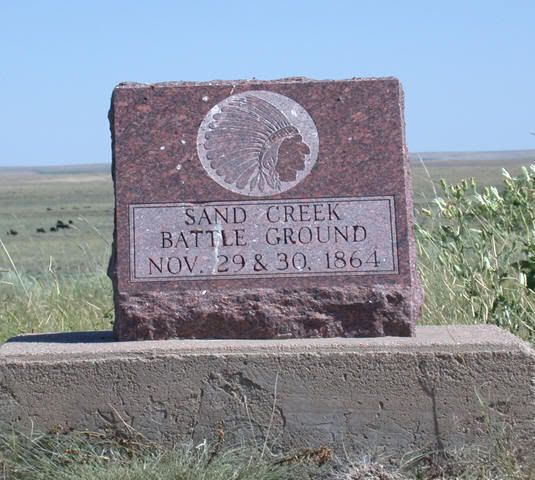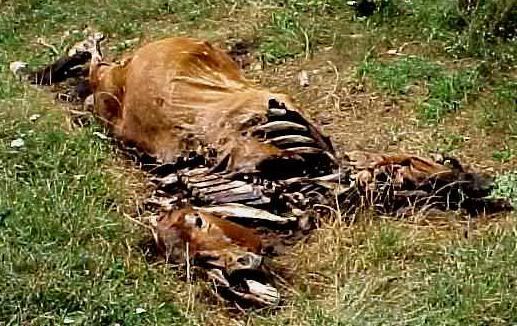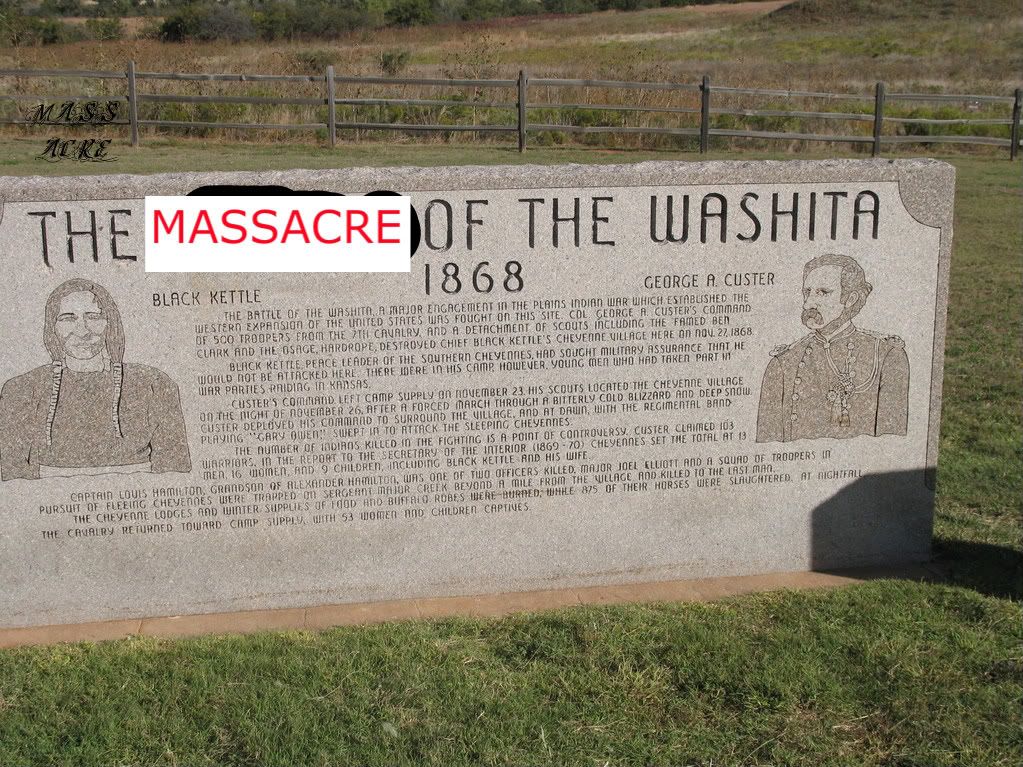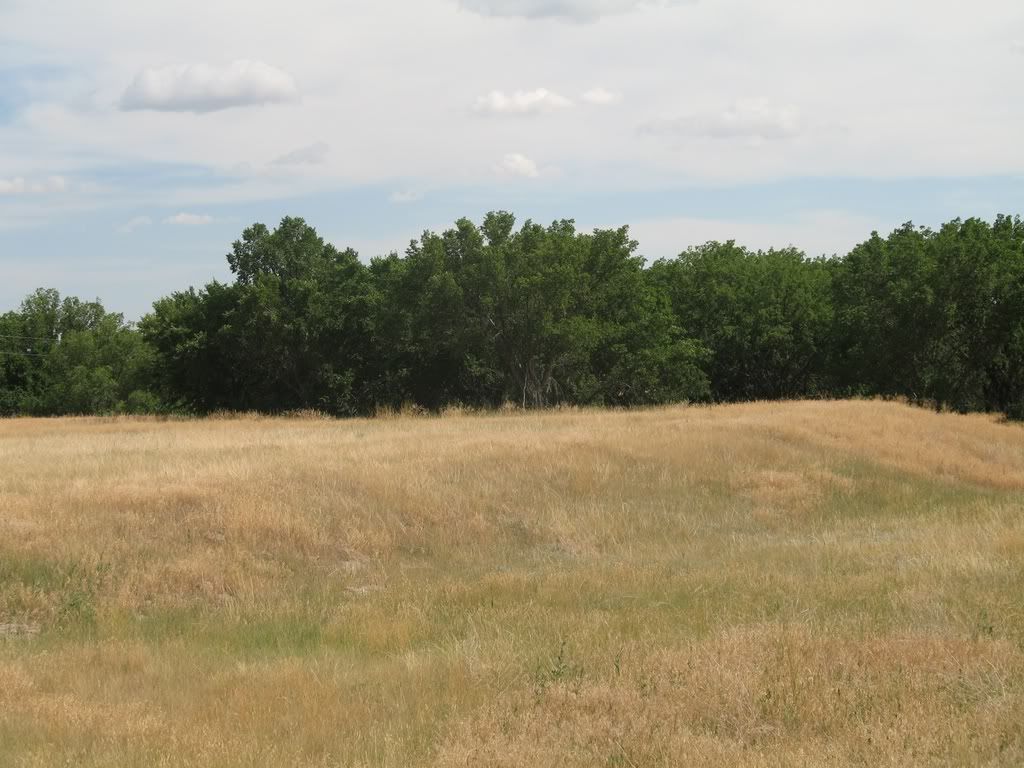The Sand Creek Massacre and the Washita Massacre both led to the Wounded Knee Massacre. The Sand Creek Massacre brought the realization that “the soldiers were destroying everything Cheyenne – the land, the buffalo, and the people themselves,” and the Washita Massacre added even more genocidal evidence to those facts. The Sand Creek Massacre caused the Cheyenne to put away their old grievances with the Sioux and join them in defending their lives against the U.S. extermination policy. The Washita Massacre did that even more so. After putting the Wounded Knee Massacre briefly into historical perspective, we’ll focus solely on the Wounded Knee Massacre itself for the 119th Anniversary of the Wounded Knee Massacre.
Crossposted at Native American Netroots
Black Kettle, his wife, and more than 150 Cheyenne and Arapaho had just been exterminated, and Custer’s 7th was burning the lodges and all their contents, thus stripping them of all survival means. Sheridan would wait until all their dogs had been eaten before “allowing” them into subjugation, then Custer would rape the women hostages in captivity.
Jerome A. Green. “Washita.” p. 126.Far across the Washita Valley, warriors observed the killing of the animals, enraged by what they saw.
What did they see, feel, and think?
http://books.google.com/books?…And so, when the Chiefs gathered to decide what the people should do, Black Kettle took his usual place among them. Everyone agreed Sand Creek must be avenged. But there were questions. Why had the soldiers attacked with such viciousness? Why had they killed and mutilated women and children?
It seemed that the conflict with the whites had somehow changed. No longer was it just a war over land and buffalo. Now, the soldiers were destroying everything Cheyenne – the land, the buffalo, and the people themselves.
See it? Feel it?
They witnessed and felt the Sand Creek Massacre happen, again.
Consequently, a number of Cheyenne who were present at Washita helped defeat Custer at Little Bighorn.
So, let us proceed from the Sand Creek Massacre,
Why does this say Battle Ground after there was a Congressional investigation?

and from the genocide at the Washita “Battlefield” –
AND WHERE AS:
According to the 1948 Convention on the Prevention and Punishment of the Crime of Genocide, genocide means any of the following acts committed with intent to destroy, in whole or in part, a national, ethical, racial or religious group as such:
(a) Killing members of the group;
(b) Causing serious bodily or mental harm to members of the group;
(c) Deliberately inflicting on the group conditions of life
calculated to bring about its physical destruction in whole or in part;WE, the undersigned members of the Native American community and the public at large, request that this site of the attack by the United States military against 8,500 Plains Indians camped as prisoners of war along the Washita River in 1868 be designated as the Washita National Historic Site of Genocide.
– to the Wounded Knee Massacre of 1890.

Harjo: Burying the history of Wounded KneeBut Wounded Knee was 14 years after Little Bighorn. Would the soldiers have held a grudge that long and why would they take it out on Big Foot? They blamed Custer’s defeat on Sitting Bull, who was killed two weeks before Wounded Knee. The Survivors Association members had the answer: ”Because Big Foot was Sitting Bull’s half-brother. That’s why Sitting Bull’s Hunkpapa people sought sanctuary in Big Foot’s Minneconjou camp.”
The Wounded Knee Massacre of 1890
The first intention of the U.S. Army in part was to detain Chief Big Foot under the pretext that he was a “fomenter of disturbance,” remembering that Native Americans did not have equal rights at that time in the Constitution.
In addition, the real intention was doing a “roundup” to a military prison camp, which would have become an internment and concentration camp in Omaha after they were prisoners. Colonel James W. Forsyth had orders to force them into going there.
Speculating, I bet at least part of the rationalization for the massacre was so the soldiers wouldn’t have to transport them to the military prison in Omaha. Murdering them would have been easier. Then, they could’ve had another whiskey keg, like they did the evening right before this massacre, when they celebrated the detainment of Chief Big Foot. The soldiers may have even been hung over, depending on amount consumed and tolerance levels; moreover, if the soldiers were alcoholics, tolerance levels would have been high.
n : the wanton killing of many people [syn: mass murder] v : kill a large number of people indiscriminately;
“The Hutus massacred the Tutsis in Rwanda” [syn: slaughter, mow down]
White officials became alarmed at the religious fervor and activism and in December 1890 banned the Ghost Dance on Lakota reservations. When the rites continued, officials called in troops to Pine Ridge and Rosebud reservations in South Dakota. The military, led by veteran General Nelson Miles, geared itself for another campaign.
Big Foot and the Lakota were among the most enthusiastic believers in the Ghost Dance ceremony when it arrived among them in the spring of 1890.
Chief Big Foot’s arrest was ordered by the U.S. War Department for being a “fomenter of disturbance.” Chief Big Foot was already on his way to Pine Ridge with his people, when the 7th U.S. Cavalry with Major Samuel Whitside leading them approached him on horses. Big Foot’s lungs were bleeding from pneumonia.
Blood froze on his nose while he could barely speak. He had a white flag of surrender put up as soon as he caught glimpse of the U.S. Calvary coming towards them. At the urging of John Shangreau, Whitside’s half-breed scout, Whitside “allowed” Big Foot to proceed to the camp at Wounded Knee. Whitside wanted to arrest Big Foot and disarm them all immediately. Ironically, the justification for letting Big Foot go to Wounded Knee was that it would prevent a gun fight, save the lives of the women and children, but let the men escape. The Warriors wouldn’t have left their women and children to perish, but since the following was reported to Red Cloud:
Red Cloud“…A white man said the soldiers meant to kill us. We did not believe it, but some were frightened and ran away to the Badlands.(1)
I believe Whitside didn’t want the Warriors to have such an opportunity, under direct orders by General Nelson Miles.
(1): “Bury My Heart At Wounded Knee” by Dee Brown, pp. 441-442. (December, 1890).“Later in the darkness of that December night (Dec. 28) the remainder of the Seventh Regiment marched in from the east and quietly bivouacked north of Major Whitside’s troops. Colonel James W. Forsyth, commanding Custer’s former regiment, now took charge of operations. He informed Whitside that he had received orders to take Big Foot’s band to the Union Pacific Railroad for shipment to the military prison in Omaha.
Then, came the disarming.
..Colonel Forsyth informed the Indians that they were now to be disarmed. “They called for guns and arms,” White Lance said, “so all of us gave the guns and they were stacked up in the center.” The soldier chiefs were not satisfied with the number of weapons surrendered, so they sent details of troops to search the tepees. “They would go right into the tents and come out with bundles (sacred objects) and tear them open,” Dog Chief said. “They brought our axes, knives, and tent stakes and piled them near the guns.” Still not satisfied, the soldier chiefs ordered the warriors to remove their blankets and submit to searches for weapons…
Yellow Bird, the only medicine man there at the time danced some steps of the Ghost Dance, while singing one of it’s songs as an act of dissent. Simultaneously, the people were furious at the “searches” when Yellow Bird reminded everyone of their bullet-proof shirts. To me, this was the void in time when the Ghost Dancers chose peace over war, and made it possible for the resurgence of their culture to occur in the future. A psychological justification for my saying so, is the Ghost Dancers would also have been Sundancers. Part of the well-known intent behind the Sundance is “that the people might live.”
Continuing on; next, was false blame.
…Some years later Dewey Beard (Wasumaza) recalled that Black Coyote was deaf. “If they had left him alone he was going to put his gun down where he should. They grabbed him and spinned him in the east direction. He was still unconcerned even then. He hadn’t pointed his gun at anyone. His intention was to put that gun down. They came and grabbed the gun that he was going to put down…(1) in proceeding paragraph, p.445.
…The massacre allegedly began after an Indian, who was being disarmed, shot a U.S. officer.
Hotchkiss guns shredded the camp on Wounded Knee Creek, killing, according to one estimate, 300 of 350 men, women, and children.
More people survived if they tried to escape through this tree row, because there was more tree cover.
More were massacred if they tried to escape through this tree row, because there was much less tree cover.
The truth has still been tried to be slanted and concealed, even after over one century ago, because the old sign said that there were 150 warriors. The truth is, there were only 40 warriors.
It was nothing less than false blame, deceptive actions, and blatant lies by the blood-thirsty troopers that started the Wounded Knee Massacre of 1890. In recognition of the governmental policy of using smallpox infected blankets as germ warfare against Native Americans since the first presidency, the Sioux Wars, and all the “successful” extermination by the U.S. government prior to this last “battle;” would they have had the atom bomb, they would have used it too.
For that would have been more convenient, than loading their remaining victims (4 men and 47 women and children) into open wagons and transporting them to Pine Ridge during the approaching blizzard for alleged shelter at the army barracks, then to the Episcopal mission “unplanned.” They left the survivors out in that blizzard in open wagons for who knows how long, while “An (singular) inept Army officer searched for shelter.”(1)
What that tells me is: they didn’t plan on having any survivors. They planned on exterminating them. Of course, there wasn’t any room at all in the army barracks for 51 people, so they had to take them to the mission. Well…if they’d been white, they would’ve found room for a measly 51 white people.
“…A recurring dream in the mid-1980s directed a Lakota elder to begin the ride as a way to heal the wounds of the 1890 massacre. It continues today to honor the courage of the ancestors and to teach the young to become leaders…The Big Foot Ride began in 1987 at the urging of Birgil Kills Straight, a descendant of a Wounded Knee Massacre survivor. Each year, the riders have come together to sacrifice and pray for the 13-day trip from the Standing Rock Reservation beginning on the anniversary of the death of Sitting Bull and ending at Wounded Knee on Dec. 28, the day before the anniversary of the massacre…”
“…The two-week Ride started in 1986 after a dream told one of its founders that it would “mend the sacred hoop” and heal the wounds of the famous massacre. For the first four years, the ride was led in intense cold by Arvol Looking Horse, keeper of the White Buffalo Calf Woman pipe bundle in Green Grass, S.D. It is now carried on by youths from the Lakota nation, starting in Grand River near Mobridge, S.D. on the Standing Rock Sioux reservation and continuing south 200 miles to Pine Ridge…”









4 comments
Skip to comment form
Author
& @ Kos
http://www.dailykos.com/story/…
May the Goddess guard them in the Summerlands. May the their Nations one day find Peace, Justice ans Equality.
Blessed Be